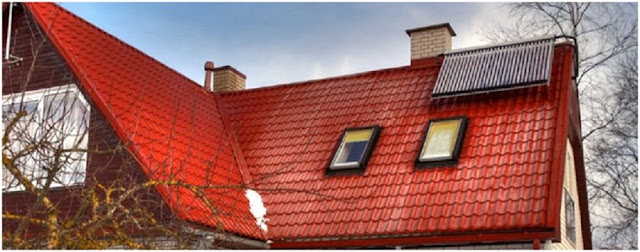Are you looking for the most efficient solar water heating systems available on the market? If yes, then you should look further than solar evacuated tubes with heat pipes. Heat pipe and vacuum tubes technologies are not new in the solar industry as the International Space Station has been using both technologies.
Most laptops use heat pipes internally for cooling the motherboard and vacuum tubes are used in electronic appliances like TV and radios. They are still the go-to options for high-end amplifiers.
Understanding Solar Vacuum Tubes –
Solar vacuum tube is otherwise known as evacuated tube. The vacuum tube is made of Borosilicate glass that has low iron and allows through more solar radiation than the ordinary glass. This glass is very strong and is manufactured in the same way like the thermos.

There’s an outer and inner glass layer. In between both the layers, air is removed or evacuated to form the vacuum. Though there’s no air inside, there’s no other way of heat transfer to either side. A patented three layer process of copper, aluminum and aluminum or nitrogen is coated in the inner glass tube. It’s a selective coating that impacts on the overall performance of the tubes as they absorb and transfer the solar heat radiation.
After all, there is a vacuum in between the layers; so the heat can’t escape. As a result, it makes these vacuum tubes 97% efficient. While manufacturing these tubes, a barium getter is installed for the absorption of any gases to make sure that vacuum is properly maintained.
The getter signals the integrity of the compromised vacuum. If a vacuum tube is broken, the getter will make the metallic coating on the bottom part of tubes to turn white that indicates a replacement is required.
How Do Solar Evacuated Tubes Solar Water Heaters Work?
The selective coating of vacuum tubes absorbs the heat energy from the sun and the energy is transferred to a central heat pipe through an aluminum fin wrapping around. The inside of vacuum tubes gets in contact with the selective coating.
There’s a copper heat pipe in the center of the aluminum fin. The heat pipe is a long tube that operates the entire length of the vacuum tube. A small amount is present in the hollow interior of this pipe.
The inner part of the heat pipe is also under a vacuum that does something different than the vacuum in the evacuated tube. Because of this vacuum, the liquid starts boiling at a temperature of around 30 degree C (86 F). This is the main principle that works behind the heat pipe technology. Under vacuum water starts boiling at a lower temperature as compared to sea level and under pressure water boils at a higher temperature.
When the heat pipes gets hot, the liquid inside heats up quickly and converts to steam. The steam goes to the top of the tub until it reaches the condenser bulb where the heat is transferred to the solar heating fluid through a heat exchanger inside. The steam loses its energy and transforms to liquid inside the condenser bulb. Gravity makes the liquid flowing back to the inside wall of the interior heat pipe and the cycle is repeated again and again.
The copper heat pipes in every vacuum tube are inserted to a copper sleeve within a sealed manifold. The heat is again transferred to the solar heating liquid through conductivity indirectly.
However, the manifold doesn’t depend on the heat pipe and no leakage can occur even if the heat pipe is removed. The manifold is heavily insulated and a temperature sensor is inserted in a small sleeve present inside the manifold. This way, the internal temperature of the heating fluid relays back to the digital controller.
If the temperature is greater in the solar collector than the water in the pool or tank, then the controller indicates the pump to turn on and circulate the heating fluid. When the sun goes down in the evening, the manifold cools down to the point – the temperature is less than the water or pool, signaling the pump to stop.
Bottom Line –
Are you looking to learn more about solar water heating systems? If yes, then you should choose no other than 123 Zero Energy. For more information, please visit our website

